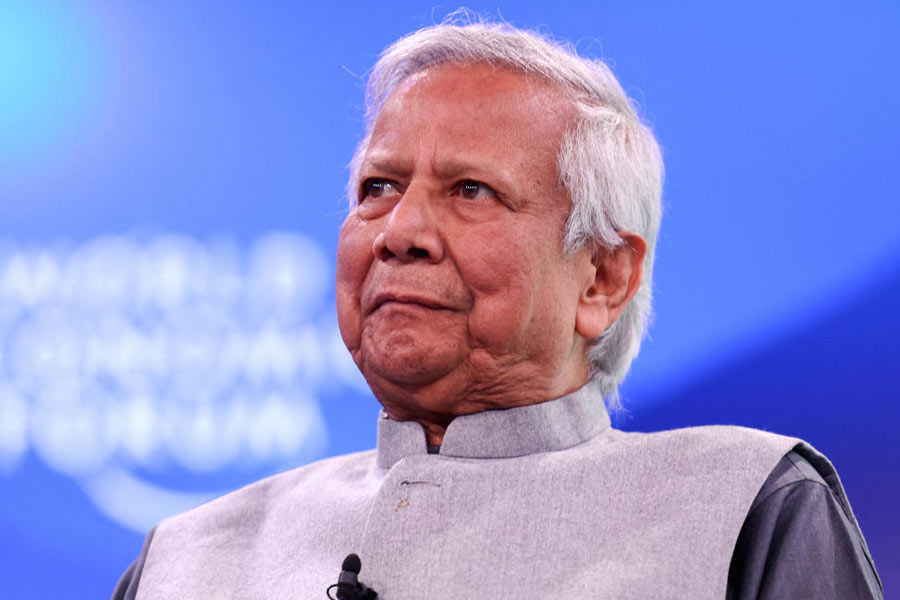 |
 |
 |
 |
| (From top) A view of the Northumbria seacoast ; the castle at Durham ; the Lady Waterford Hall and a Tudor fort near Belford |
Stop! Stop!” Lewii cries as we drive away from the bustle of Newcastle, over the crowded bridge across the Tyne, towards the North Sea, past Blyth and Ashington, and into the wild Northumbria countryside. “Oh, stop! Stop!” he begs, thumping on the window. “I want to capture that sunset, please!”
Lewii had just turned four and is already an inveterate traveller and worshipper of beauty. He can use an Instamatic camera with ?lan. His parents, our hosts, are driving us to the lost kingdoms by the sea. And their little boy wants to be the first conqueror in our gang. We pull the car up under an ancient elm on the little road off the highway and jump out. Lewii gets to work like a pro and we decide to take a short walk across the fields in the fading light.
Northumbria ? or to give it its full nomenclature, Northumberland ? has about its atmosphere a wonderful feeling of primitive lure. And the sunset we see is truly spectacular. Little Lewii is just as enchanted. It takes a huge amount of effort to get him away from his task.
“We’ve got to reach Beadnell before it gets dark,” warns his father. “Otherwise, we may have to contend with the dragon.”
Instantly appeased, Lewii crawls back into his seat and we’re off again, driving past vivid green pastures and hazy blue hills that roll down to sheep-cropped fields and dark woods and, in turn, give way to farmlands and finally the coast. Northumbria is the land of dragons and Vikings. It has about it a rugged wilderness that can, at one moment, inspire you with wonderment and awe, and then, in a flash, take on a slow, grey misery. Fortunately for us, we get to see the brighter side of Northumbria throughout our visit.
We stay in the little fishing village of Beadnell, at a Bed and Breakfast run by a rather stern-looking divorc?e with bluestocking, Bohemian leanings, trying desperately to be part of the New Age flotsam. But she cooks divine kippers and lays out breakfast the next morning, replete with just-picked tomatoes still drowsy from the sun, near-perfect omelettes and, of course, delicious kippers. Satiated with food, we look forward to driving out and exploring the coast.
Lindisfarne castle, perched atop a crag on the Holy Island, is typically Tudor, trying now to be self-consciously Edwardian and posh. Accessible over a causeway at low tide, we wait with other tourists for the sea to retreat before we can walk across and explore the nooks and crannies of this monolith, which was refurbished by the renowned architect, Edwin Lutyens, in 1903. I am reminded of Lutyens’ India connection, but this bastion is as different from our Rashtrapati Bhavan in New Delhi as chalk from cheese.
It is almost like a pilgrimage. We stride across the causeway after almost two hours of hanging around with a motley crowd. There’s a boisterous group of college kids followed by a bunch of disapproving women in classic rich-girl slacker gear. An American matron with stiff mascara-ed lashes and in the most elaborately constructed confection of peau-de-soie and lace draped around her ample structure insists on grabbing my arm. She ventures forward on vertiginous high heels, huffing and puffing and then, alas, giving up the adventure with a sigh. As she collapses on a rock at the base of the castle and fishes out a tissue to wipe her face, Lewii decides to shoot her, much to our amusement and the matron’s alarm.
What compensates for the long wait is the breathtaking view of the sea, lost in a cerulean horizon of mystery and bobbing boats. Far below I can see the gardens planned by Gertrude Jekyll, the reputed landscapist. Within the castle, the rooms are small but charmingly done up, waiting for a spindle to begin humming and the piano to play. Nearby is the Lindisfarne Priory and Museum, one of the most important early centres of Christianity in Anglo-Saxon England.
Northumbria’s charm is unsophisticated. If it were a woman, it would never boast an obese address book bursting at the spine. Rather, I imagine Northumbria with a face full of freckles and washed clean of any artifice and cunning, loyal to just a handful of friends.
The sea we drive past mocks us with its airy persiflage that finally breaks into giggles on the lapping waves. There are vast stretches of sheer sand still waiting to be discovered and we often stop on impulse for impromptu picnics. Lewii continues to click his pictures while we succumb to the soft whisperings of the breeze. And when night arrives in great purple floods after our wanderings, we head towards quaint pubs that still sport thatched roofs and give ourselves up to the pleasures of hearty, no-nonsense steaks, accompanied by potatoes baked in their jackets and a pint of beer.
The highpoint of our holiday is a visit to Alnwick, from where we trek across three miles of rolling meadows to finally confront the fabled Chillingham cows, still as wild as they used to be when they were first discovered in the 16th century. There is about the beasts a primeval sense of menace, their long horns ready to gore any untoward tourist. “Be careful!” Lewii warns, riding his father’s shoulders and clutching his camera for dear life!
From the wilds of Chillingham we stop next at the Lady Waterford Hall in the vicinity and admire her beautiful paintings of flowers and birds. Once again I am reminded of Lady Waterford’s association with India. She’d come out to Calcutta to see her sister, Lady Canning and her sister’s husband, Lord Canning, during the days of the Raj and spent much of her time drawing and painting during her travels in the East.
We take time off to visit the Durham Castle, peep at the austere Durham Cathedral and drop by at the Finchale Priory. All along the coast lie deserted citadels, lost in their thoughts and unmindful of tourists trampling their grounds. Yet, at dusk, when shadows lengthen and dim streetlights wrap the atmosphere in an eerie cloak, you can almost hear the whisper of nuns and abbots humming the vespers in some unknown church or hear the trampling of hooves as Vikings dash about the dark, fighting their lonely battles.
Northumbria’s charm lies in its unspoilt coast, from the horseshoe-shaped beach overlooking the sand dunes at Beadnell ? the only west-facing harbour on England’s east coast ? to Tynemouth’s Long Sands Beach, stretching half a mile from the village of Cullercoats at the northern end and the rocky outcrops guarding King Edward’s Bay in the south. This is the ideal place to catch crabs or spot sea anemones or, if you shut your eyes tight enough, glimpse the legendary monster with gigantic scales and horns and spitting fire rising from the waves, as Lewii runs wild with his camera and can’t stop telling us to say ‘C-H-E-E-S-E!’
Photographs by the author
Rock steady
 |
 |
Are you one of those who just can’t get enough of adventure sports on TV but have serious doubts about whether you’ll ever be able to work up the nerve to take the plunge yourself? Well then, bungee jumping or battling the rapids may not exactly be your cup of tea, but now’s as good a time as any to jump into the world of rock-climbing. It’s fun, it’s exciting, it’s addictive — and the best part about it is that it can be just as easy — or difficult — as you want it to be.
Like the rest of the world where the sport’s popularity is gaining by leaps and bounds, India too, has more than its fair share of places suitable for rock-climbing. Read on to prep yourself up for this challenge, so that the next time you’re caught between a rock and a hard place, you’ll know just what to do!
Where to go
Sheer rock faces, ideal for rock climbing, can be found across India, especially in the north, which offers some of the best and toughest challenges for amateurs as well as professionals. “High-altitude climbers will enjoy the rock faces at Sonmarg in Kashmir and Gangotri in Garhwal, Uttaranchal while Lado Sarai in Delhi and Dhauj and Dam Dama, near the Capital are other options,” says Devendra Singh, advisor, Adventure Tour Operators of India. In Himachal Pradesh, Manali and Dharamshala and the adjoining region provide some of the most exciting rock-climbing in the world.
Head west and there are several good rock-climbing destinations near Mumbai like the Kanheri Caves in the Borivili National Park, Mumbra Boulders, and Manori Rocks. In Gujarat, Pavagadh is a favourite rock-climbing destination while in Rajasthan, the region around Mount Abu is popular.
In the east, areas near and around Calcutta like Purulia, Matha Bura, Jai Chandi, and Susunia Hills offer good rock-climbing. Says Sukumar Chakraborty, secretary, Chandannagar Mountaineering Association, “The Susunia Hills, in fact, are a good place for amateurs in West Bengal to begin, as besides the challenging options, it offers nursery rocks that are technically easy to navigate. The distance between the ledges is comparatively less, which is why it’s easier to get a hand or a foothold.” Besides, this, Chakraborty also speaks highly of places in Bangalore and Pune.
Down south, the options are equally attractive. Badami, a five-hour drive from Bangalore, is a good place for rock climbing and the Garden City is surrounded by other rock-climbing destinations like Ramanagaram, Thuralli, Kabbal and Raogodhu. Kambakkam, 100 km from Chennai, provides good climbing while Hampi in Karnataka has some of the best granite rocks in India providing climbers plenty of opportunities to test their skills.
Types of rock-climbing
Modern rock climbers usually use three styles of climbing: free climbing, aid climbing and a combination of both. There is yet another type, face climbing, which involves climbing against the face of a rock.
Free climbing: A free climber depends entirely on his skills, confidence, and footwork to achieve his target. He does not need any technical instrument except for safety.
Aid climbing: Used for climbing rocks too difficult to negotiate without any external help, here the climber relies on instruments to reach the summit. “In West Bengal, the Matha hills in Purulia require aid climbing as do some rocks in the Susunia Hills,” says Chakraborty.
Free and aid climbing: Most of the modern climbing revolves around this method. Pre-placing bolts and other protection is a part of this climbing process.
Best season
October to February. Remember monsoons should be avoided.
Safety
Climbing is relatively safe, but that said, climbers should always take precautions. Specialist equipment such as ropes are often used to protect climbers from falls. The other major equipment required includes ascenders (devices that help in ascending, like jummars), helmets, karabiner, chalk, chest harness, harness seat, nut, cliffhanger, climbing shoes and tape slings.
Says Singh, “People looking for rock-climbing are usually into hardcore adventure, but we recommend that they go through training at places like Nehru Institute of Mountaineering, Uttarkashi; Himalayan Institute of Mountaineering, Darjeeling; Western Himalayan Mountaineering Institute, Manali, among others, after which they can pursue the sport. There are also places like the Indian Mountaineering Foundation, Delhi, which offer artificial walls, which is a great way for a beginner to kick things off in a safe environment.'
Other precautions to be taken into account are:
Decide what type of rock you want to negotiate. It will depend on your skills, your status as a climber, and your physical fitness.
Consult the doctor to determine your physical condition and take proper medical precautions.
High-altitude sickness or high-altitude madness is a common phenomenon among trekkers and mountaineers. Proper mountaineering guidelines, high-altitude survival and first-aid techniques should be known to most of the members.
Permits and government agencies
Indian Rock and Sport Climbing Federation is the apex body for rock climbing in India. There is no restriction on rock-climbing except for places in the restricted area list. You can contact the regional registration offices in major cities. The district administration of the concerned areas can also issue permits.
My favourite holiday
 |
Harshvardhan Neotia,
entrepreneur
I travel quite a lot, both for business and pleasure, but London remains my favourite getaway. Maybe it has something to do with the fact that my parents have been taking me there ever since I was a teenager, or that I love the arts and London is so culturally-rich, but I go there almost every year.
The best part about London is that I’ve been there so many times by now, that it feels like a second home. I love going for long walks in the parks, or even taking in the theatre, right from The Mousetrap to Phantom of the Opera. There’s always something happening, be it exhibitions or streetside shows and the restaurant scene out there is also pretty amazing. We usually go there during summer or in the fall, and though, we’ve visited nearby places like Oxford a few times, most often, my family and I just enjoy soaking in the local sights and sounds and spending time with all our friends there.
Route map
• Another new airline is set to make the Indian skies busier than ever. Coimbatore-based Paramount Airways is going to take to the air this month with flights connecting south-Indian tier-2 cities with Chennai and Delhi. First on the cards are a daily flight from Coimbatore to Delhi and back, a flight from Kochi-Coimbatore-Delhi and back, a flight between Madurai and Coimbatore and one between Chennai and Coimbatore. Paramount is flying the Brazilian aircraft Embraer and the airline will be selling tickets through ATM-like kiosks, with e-payment and e-ticketing facilities.
Paramount will be unique in that it will only have business class seats. Plans are afoot to link more cities in under-serviced sectors.
• This one is for those who’ve always wanted to attend the Pushkar mela in Rajasthan, but never got around to doing so. There’s time for you yet to make a booking at The WelcomHeritage Royal Camp that will be pitched for 10 days from November 7-18. The full moon night during this period is when hordes of pilgrims descend on this temple town. Then there’s the barter of cattle and camels to look forward to. The package is a bit steep at Rs 9,000 a night, per head (but this includes meals, accommodation, camel rides and taxes).
WelcomHeritage has also turned its eye on Kerala. Negotiations are on with owners of heritage properties in the state and soon you may enjoy a trip to the backwaters with stay at a quaint heritage hotel.











